November 26, 2025 | 00:04 GMT +7
November 26, 2025 | 00:04 GMT +7
Hotline: 0913.378.918
November 26, 2025 | 00:04 GMT +7
Hotline: 0913.378.918
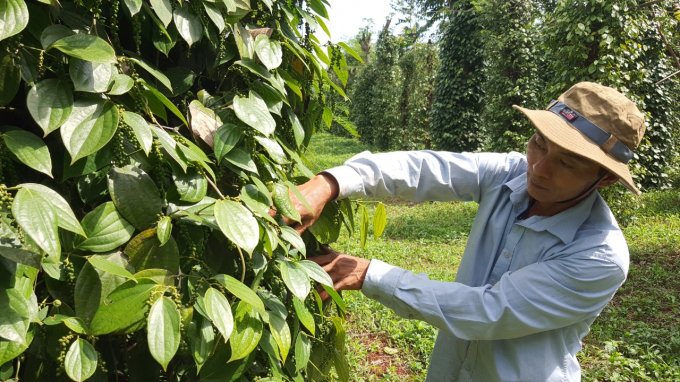
Chu Se’s pepper growers are switching to organic cultivation.
Chu Se pepper industry have seen signs of rebound as pepper prices are now above VND80,000 per kilo and have sustained the high levels for a long time. It was expected by the end of 2021 the prices could reach between VND90,000 and VND100,000 per kilo. Increasing prices have encouraged Chu Se farmers to rebuild their pepper plantations with expectation of making pepper industry back to its golden age. To avoid price crisis as before and to develop the industry sustainably, Chu Se pepper farmers have been more cautious as they have made rationale investment and focused on growing pepper organically.
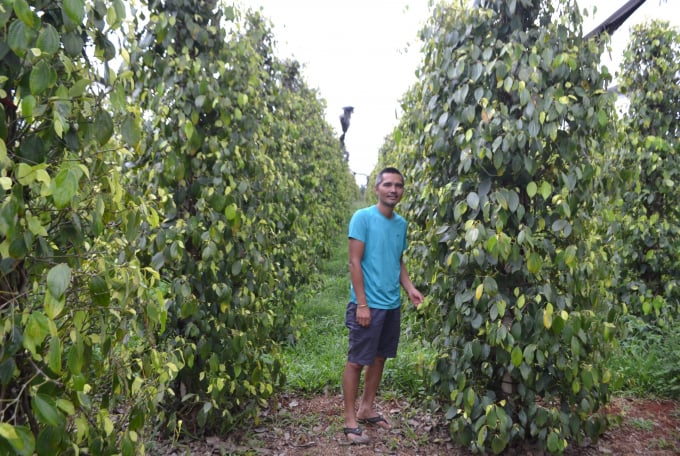
Many farmers are restoring their pepper plantations after a long period.
As one of the first farmers growing pepper organically in the area, Le Hung Huan (Village 7, Ia Blang commune, Chu Se district, Gia Lai province) has now owned 8 hectares of pepper including three hectares of newly-grown plants and five hectares producing fruits.
In the past the slow death disease used to devastate Gia Lai’s key pepper growing areas including Chu Se and Chu Puh. Despite that Huan’s pepper plantation remained flourishing with stable yields thanks to taking scientific and technical measures, especially paying attention to organic farming practices.
One of the measures taken by Huan was leaving the grass grown around the tree roots. While others were trying to clear the grass for their gardens he was doing the opposite.
According to Huan, keeping the grass around the tree roots could save time on clearing the grass. When the grass became lush he just needed to cut the grass and did it several times a year. “The benefit of keeping the grass is that it not only protects the plants from being flooded in the rainy season but also keeps the soil cool in the dry season. Meanwhile the cut part of the grass can be used as organic matter,” Huan said.
Besides, Huan limited the use of artificial chemical fertilizers and pesticides. Instead, he used organic fertilizers as an effective alternative.
Apart from the adoption of organic farming practices, many local pepper growers have taken part in linkage chains to be more sustainable. Over the past time, Hung Thinh Investment and Construction Joint Stock Company (OLAM) pioneered in introducing the linkage model in pepper production and consumption. It was targeted that there will be 400 households joining the model by the end of 2022.
Similarly, Loc Troi Group Joint Stock Company planned to link up with the local farmers. Accordingly, in 2021, Chu Se Pepper Cooperative was established, covering the area of 50 hectares and it’s expected to increase to around 1,000 hectares.
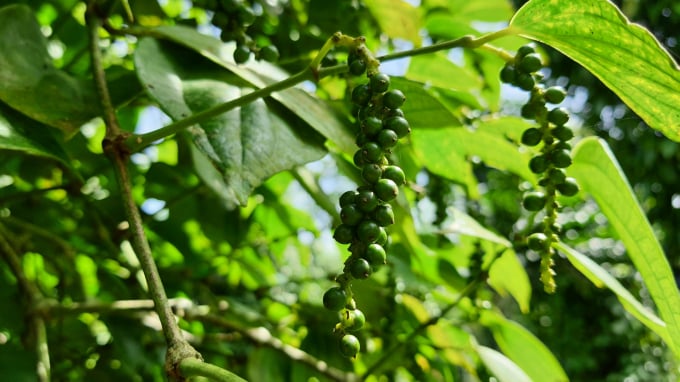
Pepper prices have recently recovered.
Nguyen Van Hop, Head of Chu Se’s Office of Agriculture and Rural Development said the district had nearly 3,000 hectares of pepper in total with a production of over 11,000 tons per year, 5,454 pepper households along with 34 pepper businesses and 95 purchase facilities.
Additionally there are four pepper factories in the area including An Thang One Member Company Limited which got VietGAP certification for its pepper grown on 5.7 hectares with production of 35 tons per year; Hoai Truong Cooperative in Ia Blang commune; Ia Ring Cooperative in Ia Tiem Commune and Truc Phung Business Household in Ia Pal commune.
Particularly, the white pepper product manufactured by An Thang company was recognized as three-star OCOP product.
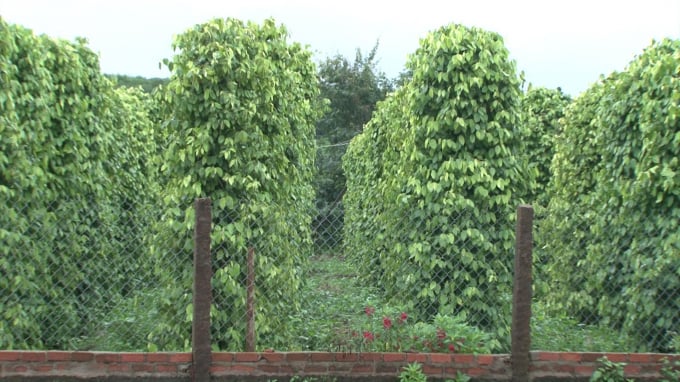
Eighty-five percent of Chu Se’s pepper growing area used Vinh Linh variety.
Eighty-five percent of Chu Se’s pepper area used Vinh Linh variety and the rest were under cultivation with the use of Loc Ninh, Phu Quoc, India, Sri Lanka varieties.
According to Nguyen Van Hop the development and promotion of Chu Se pepper especially received attention from the district’s People’s Committee and the local agricultural agency.
Currently there are two facilities using the collective trademark symbol of Chu Se Pepper on their packages including FAOS Organic Cooperative and Truc Phung Business Household.
In addition, the Chu Se pepper has been granted a collective mark by the National Office of Intellectual Property under the Ministry of Science and Technology according to Decision No.11.035.QĐ-SHTT dated August 14, 2007.
“Chu Se Pepper registered its trademark in 8 countries in which Germany, Netherland, the U.S, Belgium, Luxembourg, China and Singapore have issued trademark registration certificates. In India we also applied for registration of a certification mark and remained waiting for a certificate,” Hop said.
In addition to collective trademark, Chu Se district have recently strengthened Chu Se pepper through geographical indication. The National Office of Intellectual Property has now issued a decision and certificate of geographical indication for Chu Se pepper.
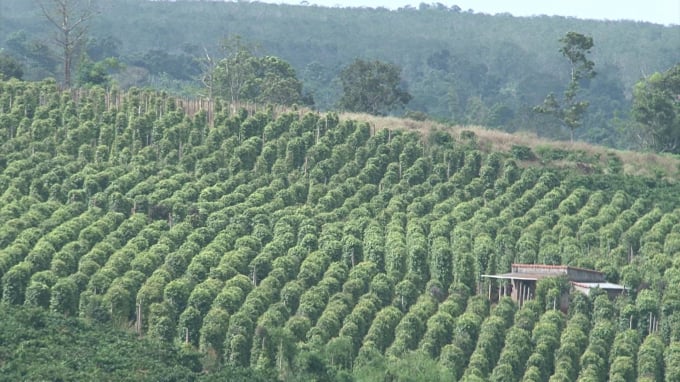
Chu Se’s agricultural competent agency is actively promoting Chu Se pepper.
“We are going to ask the People’s Committee of Chu Se district to make plans on production and trade of Chu Se pepper along with issuing the regulations and principles on how to effectively use geographical indication for Chu Se pepper,” said Nguyen Van Hop, Head of Chu Se’s Office of Agriculture and Rural Development.
To expand pepper growing area stably and sustainably in the future, Chu Se agricultural competent agency will focus on propagating and encouraging the locals to grow pepper in planning areas. In addition, the authorities will attach importance to propaganda work, training courses and technical transfer to promote sustainable pepper production, especially in terms of seedlings, soil preparation techniques, disease prevention and control, harvesting, processing, chain-based consumption associated with trademark.
Furthermore, Chu Se’s competent agencies will continue to encourage growers to adopt advanced technologies including water efficient irrigation system, using biotechnology to detect and treat diseases such as the slow death disease along with switching to sustainable farming practices to meet the standards of VietGAP, GlobalGAP, Organic and Rainforest Alliance.
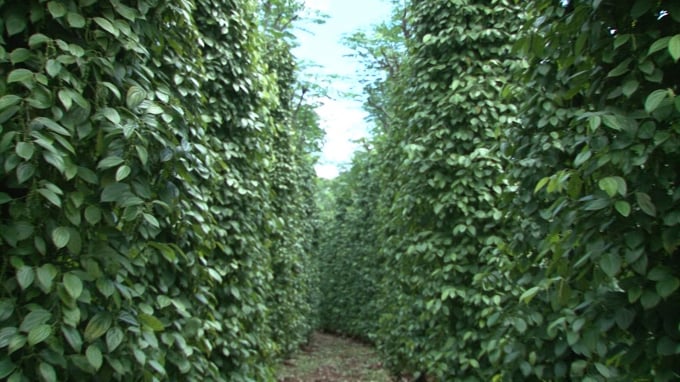
Chu Se’s agricultural agency has taken various measures to develop the pepper industry sustainably.
The role of State agencies in the management of seeds, water, fertilizers, pesticides and other agricultural materials will be strengthened to limit farm damage.
The district will put the focus on forming pepper cooperatives, building connections between farmers and enterprises, in particular making plan on linking up with Truong Thinh Investment and Construction Joint Stock Company (OLAM) and Loc Troi Group to produce safe and clean pepper products.
According to Hoang Phuoc Binh, Standing Vice Chairman of Chu Se Pepper Association (Gia Lai) growers must have knowledge and skills in pepper cultivation; grasp the development of pepper market; be aware of their investment and caring abilities to grow new pepper plants as well as continue caring the existing pepper plantations.
Translated by Mai Tham
/2025/11/25/0045-1-135246_13.jpg)
(VAN) Ca Mau is researching a model of sea-encroaching embankments combined with viaducts and logistics service zones, aiming both to prevent erosion and create land funds for marine economic development.

(VAN) The information was shared at the seminar 'Urban Agriculture - Solutions for Developing Green Spaces,' organized by the Kinh te & Do thi Newspaper and the Biotechnology Center of Ho Chi Minh City.
/2025/11/19/4141-2-132831_216.jpg)
(VAN) One of Japfa's outstanding solutions is implementing digital transformation and artificial intelligence (AI) to optimize operations, enhance productivity, and advance sustainable development.
/2025/11/19/4847-1-093540_448.jpg)
(VAN) The Gia Lai Provincial People’s Committee had a working session with the delegation of the U.S. Department of Agriculture, the State of Idaho, and representatives of the State's leading enterprises.

(VAN) Ca Mau has a sufficient foundation to become a strong regional aquaculture center, where production integrates the economy, the environment, and the lives of the people.

(VAN) SEIKI Group envisions itself as a pioneer in the ‘dual transformation’ of digital technology and green industry, standing alongside the Government and Vietnamese businesses in their pursuit of sustainable development.

(VAN) The VNGEONET network affirms Viet Nam's progress in mastering digital space, providing a precise positioning data platform to serve socioeconomic development.